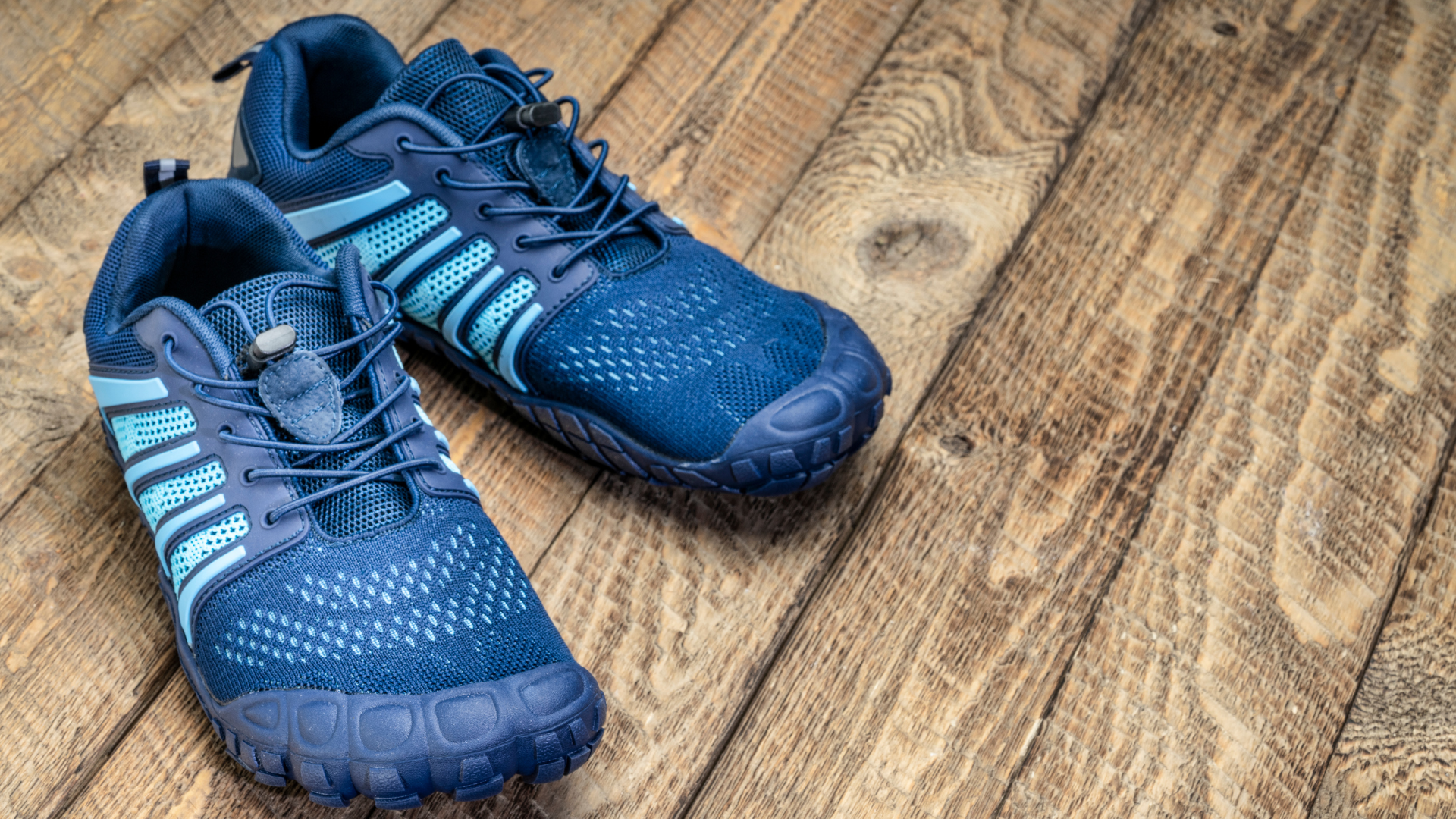
20 Apr 2023
Less is more with Minimalist Shoes
One of the most frequent questions I hear from runners today is: Should I be running barefoot?
Humankind has run for thousands of years successfully. We’ve run to escape prey, to hunt, to survive. We ran barefoot. From an evolutionary perspective we are well designed to run. The first shoes were crafted as a simple protective layer to prevent skin damage to the feet.
So, why do we wear shoes?
During the recreational running boom in the 1970/80’s, an increased number of runners reported injury. Scientists, coaches, athletes and shoe companies started experimenting with the possibility that shoes could help prevent injury.
Shoes were developed with increased cushioning and gel heels. Three major categories of shoes were developed for excessive pronators, the neutral foot, and excessive supinators.
There is little to no evidence in scientific research to support this type of footwear prescription.
Studies have shown that increased cushioning in the shoe increases the interface between the foot and ground and decreases sensory input to the foot. Lack of sensory feedback results in higher impact on joints and disruption of normal patterns of motion.
Barefoot vs. Shoes: The Great Debate
The sensory input we experience when running barefoot makes us automatically land more gently, decreasing the impact forces on our joints. The foot muscles are stimulated to react in appropriate patterns during the contact and propulsion phase.
Studies show that the elevated heel in traditional running shoes causes the heel to strike the ground first in front of the body. This increases the ground reaction forces and contact time on the ground resulting in increased force through the limbs and greater muscular effort during propulsion. The higher heel also increases the lateral forces on the lower extremity. Running barefoot encourages a shorter stride and a mid-foot strike, decreasing these forces and decreasing contact time on the ground. This helps to lessen the load on the hips and knees.
Studies show that shoes with motion control increase the risk of injury because they alter your intrinsic running gait. The shoe should be flexible to allow the natural movement of the foot.
Technology and design choices have made typical running shoes heavier, resulting in decreased efficiency and performance especially as we run longer.
With all the money spent on shoe technology, statistics show today that running-related injuries have been on the rise and those who wear shoes are injured more than those who run barefoot.
Why do we recommend minimalist running shoes?
Our thoughts today are that the perfect shoe protects the skin, is light, minimizes the interface between the foot and ground, and encourages a midfoot strike. In other words a perfect shoe is the barefoot or minimalist shoe. A word of caution: a proper adaptation period is a must when transitioning to minimalist shoes.
Living in Canada, we are forced to wear shoes to protect us from the elements. We have adapted to shoes. In order to make the change from bulky shoes to barefoot or minimalist shoes we need time to adapt and strengthen. Transition requires training slowly without provoking pain through progressive increases in volume and intensity over a 6 – 12 month period. It is advisable to consult with a professional to get you started on a program for successful transition.
Are minimalist shoes for you?
Minimalist/ Barefoot running is not advised for people post-traumatic foot injuries resulting in deformities or anyone with decreased sensation in the feet. Also, people who are unwilling to decrease their training to allow for proper adaptation should not choose minimalist shoes.
There are many new minimalist shoes on the market. Studies show that one should pick a shoe that protects the skin and is as close to the barefoot as possible.
Tips for transitioning to minimalist shoes:
1. Buy the right pair.
Success in transitioning to minimalist shoes starts before checkout. When shopping around for your perfect minimalist shoe, you want to make sure it fits. Choose a pair that matches the natural shape of your foot, with at least a finger width of space in front of the toes and enough room to let your toes spread.
2. Start with walking.
Not only are these shoes going to be a new feel for your feet, they are (likely) going to brand new, period. Any new pair of shoes should be broken in before hitting the ground running. Start with walking while wearing your new minimalist shoes for 30 minutes a day. If that feels comfortable, begin with shorter runs and slowly ramp up to your usual training routine.
3. Listen to your body.
Though minimalist shoes may be a great option in the long run, it’s important to pay attention to your body during this transition. Your gait may change and you may feel your muscles and joints working in new ways. Keep a lookout for any new pains, fatigue, or discomfort, and recognize when you may need to take a break or slow down. When in doubt, consult with a healthcare professional.
4. Adopt exercises to build strength and flexibility in your feet.
Most of us know to warm-up our legs before and stretch them out after a run, but few of us pay special attention to warming-up and stretching-up our feet. Exercises like toe towel grabs, toe extension stretches, and self-release techniques with lacrosse balls are a good place to start. Proper preparation and maintenance of foot health will help you run better and avoid injury.
Whether you are considering making the switch to minimalist shoes or simply want to improve your foot health, our knowledgeable practitioners at Aquatic Center Physiotherapy can help! We can assess your gait and foot function to make sure that minimalist shoes are the right fit for you. Book now or contact us to get started!

